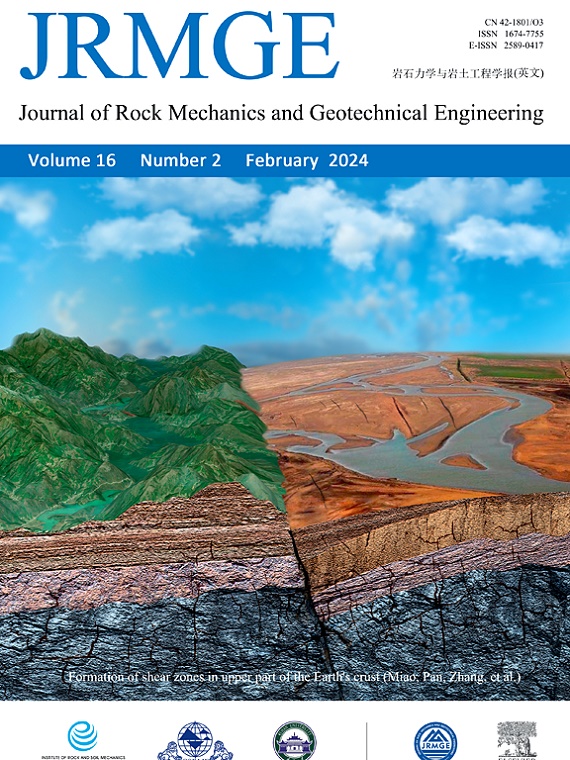Shear sliding of rough-walled fracture surfaces under unloading normal stress
Abstract
Through high-precision engraving, self-affine sandstone joint surfaces with various joint roughness coefficients (JRC = 3.21–12.16) were replicated and the shear sliding tests under unloading normal stress were conducted regarding various initial normal stresses (1–7 MPa) and numbers of shearing cycles (1–5). The peak shear stress of fractures decreased with shear cycles due to progressively smooth surface morphologies, while increased with both JRC and initial normal stress and could be verified using the nonlinear Barton-Bandis failure criterion. The joint friction angle of fractures exponentially increased by 62.22%–64.87% with JRC while decreased by 22.1%–24.85% with shearing cycles. After unloading normal stress, the sliding initiation time of fractures increased with both JRC and initial normal stress due to more tortuous fracture morphologies and enhanced shearing resistance capacity. The surface resistance index (SRI) of fractures decreased by 4.35%–32.02% with increasing shearing cycles due to a more significant reduction of sliding initiation shear stress than that for sliding initiation normal stress, but increased by a factor of 0.41–1.64 with JRC. After sliding initiation, the shear displacement of fractures showed an increase in power function. By defining a sliding rate threshold of 5 × 10−5 m/s, transition from “quasi-static” to “dynamic” sliding of fractures was identified, and the increase of sliding acceleration steepened with JRC while slowed down with shearing cycles. The normal displacement experienced a slight increase before shear sliding due to deformation recovery as the unloading stress was unloaded, and then enhanced shear dilation after sliding initiation due to climbing effects of surface asperities. Dilation was positively related to the shear sliding velocity of fractures. Wear characteristics of the fracture surfaces after shearing failure were evaluated using binary calculation, indicating an increasing shear area ratio by 45.24%–91.02% with normal stress.

 求助内容:
求助内容: 应助结果提醒方式:
应助结果提醒方式:


